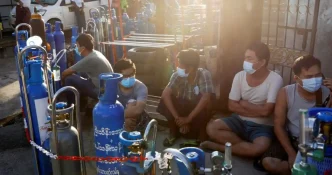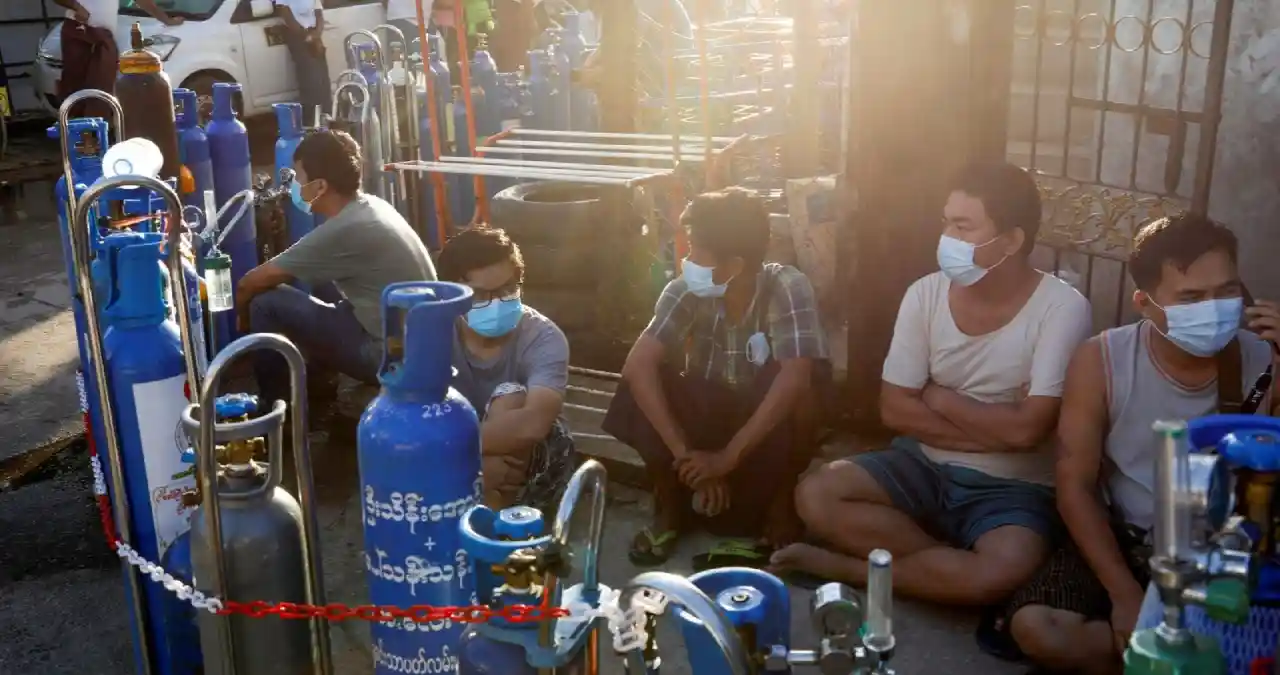A recent uptick in COVID-19 cases in Myanmar has raised concerns among health officials and the public, as the country grapples with a fragile healthcare system amid ongoing political and economic turmoil. According to the Ministry of Health, 52 new cases were confirmed between June 8 and 15, 2025, a noticeable increase from the 31 cases reported the previous week and 17 cases from late May. While no deaths have been recorded during this period, the rising infection rate—now at 2.28% of tested individuals—signals a potential resurgence of the virus in a nation already facing significant challenges.
A Gradual Increase in Infections
The latest data from Myanmar’s Ministry of Health paints a concerning picture. Between June 8 and 15, 2,285 suspected cases were tested, with 52 individuals confirmed to be infected. This follows a week where 2,154 tests revealed 31 positive cases (1.44% infection rate) from June 1 to 8, and an earlier period from May 25 to June 1, where only 17 people tested positive. Many of the recent cases have been traced to townships in Yangon Region, the country’s largest urban center and a hub for economic activity, where population density and limited healthcare access heighten the risk of transmission.
While the numbers remain relatively low compared to the peaks of the pandemic in 2020 and 2021, the steady climb over recent weeks has prompted health experts to call for vigilance. The absence of reported deaths offers some reassurance, but the increasing positivity rate suggests that undetected cases may be circulating in communities, particularly in areas with limited testing capacity.
Healthcare Under Strain
Myanmar’s healthcare system has been under immense pressure since the military coup in February 2021, which plunged the country into political chaos and economic hardship. Many hospitals and clinics have faced staffing shortages as medical professionals joined civil disobedience movements or fled the country due to violence and instability. Access to essential supplies, including vaccines and testing kits, has also been hampered by disrupted supply chains and international sanctions targeting the military regime.
Although vaccination campaigns have made progress in urban areas like Yangon, coverage remains uneven, especially in rural and conflict-affected regions such as Rakhine, Kachin, and Shan states. The World Health Organization (WHO) has previously warned that low vaccination rates and inadequate surveillance could leave Myanmar vulnerable to new waves of COVID-19, particularly as variants continue to evolve globally. While specific data on vaccination rates in 2025 is not publicly available, earlier reports indicated that only a fraction of the population had received booster shots, raising questions about the durability of immunity among those vaccinated earlier in the pandemic.
Regional Context and Cross-Border Risks
Myanmar’s rising case numbers must also be viewed in the context of South East Asia’s broader struggle with COVID-19. Neighboring countries like Thailand and Laos have reported fluctuations in infections over the past year, often linked to cross-border movement and seasonal gatherings. Myanmar shares porous borders with both nations, as well as with India, Bangladesh, and China, where unregulated crossings facilitate the spread of infectious diseases. Health officials have long flagged these borders as potential entry points for new variants, especially in areas like Tanintharyi and Sagaing, where monitoring is minimal due to ongoing conflict.
In Yangon, the concentration of cases reflects the city’s role as a transit point for domestic and regional travel. Markets, public transport, and informal settlements—where social distancing is often impossible—create ideal conditions for transmission. If the current trend continues unchecked, there is a risk that outbreaks could spread to other urban centers like Mandalay or spill over into neighboring regions, compounding the challenges faced by local authorities.
Public Response and Government Action
Public awareness of COVID-19 in Myanmar remains high after the devastating Delta variant wave in 2021, which overwhelmed hospitals and led to thousands of deaths. However, compliance with preventive measures such as mask-wearing and social distancing has waned in recent years, particularly as economic pressures force many to prioritize daily survival over health precautions. In Yangon’s crowded townships, residents often express resignation rather than alarm about the latest figures, with many citing the lack of accessible testing and treatment as a barrier to taking the virus seriously.
The military-led government, which has struggled to gain legitimacy since the coup, faces skepticism over its handling of public health crises. Past efforts to impose lockdowns or distribute aid were marred by allegations of mismanagement and corruption, though such claims remain unverified in official reports. In response to the recent spike, the Ministry of Health has urged the public to follow hygiene protocols and seek testing if symptoms arise, but no new restrictions or vaccination drives have been announced as of mid-June 2025. Whether the regime has the capacity—or the political will—to mount a robust response remains an open question.
International Support and Future Outlook
International aid organizations, including the United Nations and non-governmental groups, have played a critical role in supporting Myanmar’s health sector during the ongoing crisis. However, their operations are often constrained by security risks and bureaucratic hurdles imposed by the military authorities. The WHO and UNICEF have called for unhindered access to deliver vaccines and medical supplies, but progress has been slow, particularly in areas controlled by ethnic armed organizations or resistance groups.
Looking ahead, the trajectory of COVID-19 in Myanmar will likely depend on several factors: the government’s ability to ramp up testing and contact tracing, the availability of vaccines to counter potential variants, and the willingness of the public to adhere to preventive measures amid competing priorities. If the current increase in cases is a precursor to a larger outbreak, the consequences could be severe for a population already battered by conflict and economic collapse. For now, health experts are cautiously monitoring the situation, emphasizing the need for proactive measures to prevent a repeat of past tragedies.
A Fragile Balance
As Myanmar navigates this latest challenge, the intersection of public health, political instability, and economic hardship remains a stark reminder of the country’s vulnerability. The rise in COVID-19 cases, though modest for now, underscores the fragility of a nation where systemic issues amplify the impact of any crisis. In Yangon and beyond, residents and officials alike are left to hope that this uptick does not herald a more dangerous wave, while grappling with the broader uncertainties that define life in Myanmar today.
As the situation unfolds, the resilience of communities and the response of both local and international actors will be tested once again. Whether Myanmar can avert a deeper health crisis amid its myriad challenges is a question that looms large over the coming weeks.
















